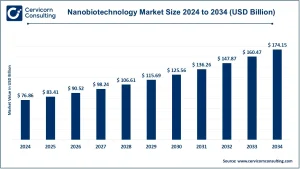Water-Based Battery Market Overview
The global water-based battery market, commonly referred to as the aqueous battery market, is witnessing strong growth and is forecasted to expand at a compound annual growth rate (CAGR) of 25.1% between 2025 and 2034. This expansion is primarily driven by the growing demand for energy storage solutions that are safe, cost-efficient, and environmentally sustainable. By replacing flammable organic solvents with aqueous electrolytes, water-based batteries—including zinc-ion, zinc-bromine flow, and iron-based flow batteries—offer improved safety and environmental performance. These systems are increasingly deployed across utility-scale, commercial, industrial, and microgrid applications, facilitating renewable energy integration, grid stability, and backup power. With global policies emphasizing sustainable, non-toxic, and locally sourced materials, the market is positioned for substantial growth.
👉 Get a Free Sample: Cervicorn Consulting
Key Market Trends
-
Eco-Safe Storage Solutions: Aqueous batteries are being adopted for urban and residential energy storage due to their non-toxic and fire-resistant properties. For instance, in early 2025, researchers at Harvard University introduced an aqueous organic battery capable of over 10,000 cycles without capacity degradation. These innovations enhance safety and regulatory compliance, with the market projected to reach $4.5 billion by 2027.
-
Integration with Renewable Energy: Water-based batteries are increasingly paired with solar and wind projects to balance intermittent energy generation. A notable example is a 50 MWh aqueous battery system commissioned in Germany in May 2025, which addresses variability in renewable energy output. Renewable-integrated systems are expected to push the market value to $8.2 billion by 2030.
-
Advancements in Battery Chemistry and Design: Innovations in electrode materials, electrolyte formulations, and flow battery architecture are improving energy density, cycle life, and scalability. These enhancements allow for multi-hour to multi-day energy storage applications.
-
Policy and Regulatory Support: Governments globally are promoting non-lithium energy storage through incentives, grants, and procurement guidelines. In 2024, the U.S. Department of Energy allocated $0.12 billion to support research on aqueous battery systems for grid-scale applications.
-
Emerging Commercialization and Industrial Adoption: Leading companies are expanding pilot projects and commercial deployments, demonstrating the reliability of aqueous batteries for utility, commercial, and microgrid applications. This trend is fostering confidence in water-based batteries as viable mainstream alternatives.
Market Drivers
-
Safety and Sustainability: Water-based batteries mitigate fire hazards and utilize non-toxic electrolytes, supporting regulatory compliance and public acceptance. Their environmental advantages align with the global push for green energy solutions.
-
Cost Efficiency and Abundant Materials: Utilizing widely available elements such as zinc, iron, and manganese reduces reliance on costly and geopolitically sensitive materials like lithium and cobalt.
-
Government Incentives and R&D Support: Funding from public and private sectors accelerates innovation, commercialization, and local manufacturing of sustainable energy storage systems.
-
Long-Duration Energy Storage Demand: As renewable energy adoption rises, utilities require multi-hour to multi-day storage solutions. Water-based batteries offer modular and scalable designs that cater to long-duration energy storage (LDES) needs.
Impact of Trends and Drivers
-
Regional Influence: Asia-Pacific dominates with a 50.8% market share due to extensive investments in renewables and supportive policies in countries such as China and Japan. North America benefits from federal incentives and the Inflation Reduction Act, while Europe leverages circular economy initiatives and local manufacturing programs.
-
Application Segments: Grid energy storage leads with a 41.2% market share, followed by commercial, industrial, residential, and microgrid applications. On-grid systems account for 46.3% of adoption due to seamless integration with existing infrastructure.
-
End Users: Utilities and power providers represent 44.5% of market adoption, utilizing water-based batteries for peak load management, renewable integration, and reliable energy distribution.
Challenges and Opportunities
Challenges: High capital investment requirements, lower energy density compared to lithium-ion batteries, and limited market familiarity may slow adoption.
Opportunities: Advancements in hybrid systems, technological innovation, policy support, and growing demand for sustainable, long-duration energy storage present significant growth potential for market participants.
Future Outlook
Starting from a valuation in the hundreds of millions in 2024, the water-based battery market is projected to become a multi-billion-dollar industry by the early 2030s. With a CAGR of 25.1% from 2025 to 2034, ongoing policy support, technological progress, and investor interest will strengthen the adoption of aqueous batteries in global long-duration energy storage strategies, particularly for renewable-integrated grids and environmentally conscious infrastructure projects.
Contact for Detailed Overview: Cervicorn Consulting

